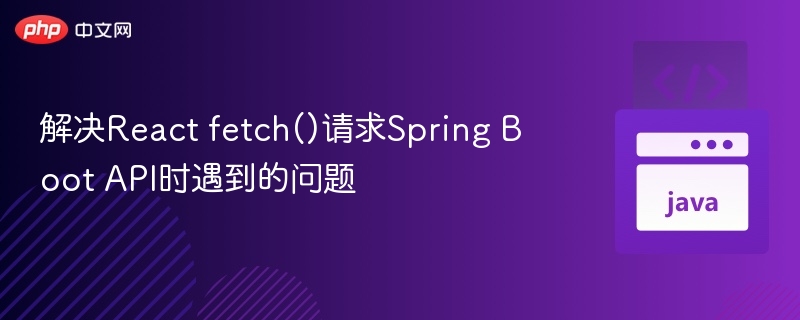AVLTree 类
亲爱的编程学习爱好者,如果你点开了这篇文章,说明你对《AVLTree 类》很感兴趣。本篇文章就来给大家详细解析一下,主要介绍一下,希望所有认真读完的童鞋们,都有实质性的提高。

avltree类扩展了bst类以重写insert和delete方法以在必要时重新平衡树。下面的代码给出了 avltree 类的完整源代码。
package demo;
public class AVLTree<E extends Comparable<E>> extends BST<E> {
/** Create an empty AVL tree */
public AVLTree() {}
/** Create an AVL tree from an array of objects */
public AVLTree(E[] objects) {
super(objects);
}
@Override /** Override createNewNode to create an AVLTreeNode */
protected AVLTreeNode<E> createNewNode(E e) {
return new AVLTreeNode<E>(e);
}
@Override /** Insert an element and rebalance if necessary */
public boolean insert(E e) {
boolean successful = super.insert(e);
if (!successful)
return false; // e is already in the tree
else {
balancePath(e); // Balance from e to the root if necessary
}
return true; // e is inserted
}
/** Update the height of a specified node */
private void updateHeight(AVLTreeNode<E> node) {
if (node.left == null && node.right == null) // node is a leaf
node.height = 0;
else if (node.left == null) // node has no left subtree
node.height = 1 + ((AVLTreeNode<E>)(node.right)).height;
else if (node.right == null) // node has no right subtree
node.height = 1 + ((AVLTreeNode<E>)(node.left)).height;
else
node.height = 1 + Math.max(((AVLTreeNode<E>)(node.right)).height, ((AVLTreeNode<E>)(node.left)).height);
}
/** Balance the nodes in the path from the specified
* node to the root if necessary
*/
private void balancePath(E e) {
java.util.ArrayList<TreeNode<E>> path = path(e);
for (int i = path.size() - 1; i >= 0; i--) {
AVLTreeNode<E> A = (AVLTreeNode<E>)(path.get(i));
updateHeight(A);
AVLTreeNode<E> parentOfA = (A == root) ? null : (AVLTreeNode<E>)(path.get(i - 1));
switch (balanceFactor(A)) {
case -2:
if (balanceFactor((AVLTreeNode<E>)A.left) <= 0) {
balanceLL(A, parentOfA); // Perform LL rotation
}
else {
balanceLR(A, parentOfA); // Perform LR rotation
}
break;
case +2:
if (balanceFactor((AVLTreeNode<E>)A.right) >= 0) {
balanceRR(A, parentOfA); // Perform RR rotation
}
else {
balanceRL(A, parentOfA); // Perform RL rotation
}
}
}
}
/** Return the balance factor of the node */
private int balanceFactor(AVLTreeNode<E> node) {
if (node.right == null) // node has no right subtree
return -node.height;
else if (node.left == null) // node has no left subtree
return +node.height;
else
return ((AVLTreeNode<E>)node.right).height - ((AVLTreeNode<E>)node.left).height;
}
/** Balance LL (see Figure 26.2) */
private void balanceLL(TreeNode<E> A, TreeNode<E> parentOfA) {
TreeNode<E> B = A.left; // A is left-heavy and B is left-heavy
if (A == root) {
root = B;
}
else {
if (parentOfA.left == A) {
parentOfA.left = B;
}
else {
parentOfA.right = B;
}
}
A.left = B.right; // Make T2 the left subtree of A
B.right = A; // Make A the left child of B
updateHeight((AVLTreeNode<E>)A);
updateHeight((AVLTreeNode<E>)B);
}
/** Balance LR (see Figure 26.4) */
private void balanceLR(TreeNode<E> A, TreeNode<E> parentOfA) {
TreeNode<E> B = A.left; // A is left-heavy
TreeNode<E> C = B.right; // B is right-heavy
if (A == root) {
root = C;
}
else {
if (parentOfA.left == A) {
parentOfA.left = C;
}
else {
parentOfA.right = C;
}
}
A.left = C.right; // Make T3 the left subtree of A
B.right = C.left; // Make T2 the right subtree of B
C.left = B;
C.right = A;
// Adjust heights
updateHeight((AVLTreeNode<E>)A);
updateHeight((AVLTreeNode<E>)B);
updateHeight((AVLTreeNode<E>)C);
}
/** Balance RR (see Figure 26.3) */
private void balanceRR(TreeNode<E> A, TreeNode<E> parentOfA) {
TreeNode<E> B = A.right; // A is right-heavy and B is right-heavy
if (A == root) {
root = B;
}
else {
if (parentOfA.left == A) {
parentOfA.left = B;
}
else {
parentOfA.right = B;
}
}
A.right = B.left; // Make T2 the right subtree of A
B.left = A;
updateHeight((AVLTreeNode<E>)A);
updateHeight((AVLTreeNode<E>)B);
}
/** Balance RL (see Figure 26.5) */
private void balanceRL(TreeNode<E> A, TreeNode<E> parentOfA) {
TreeNode<E> B = A.right; // A is right-heavy
TreeNode<E> C = B.left; // B is left-heavy
if (A == root) {
root = C;
}
else {
if (parentOfA.left == A) {
parentOfA.left = C;
}
else {
parentOfA.right = C;
}
}
A.right = C.left; // Make T2 the right subtree of A
B.left = C.right; // Make T3 the left subtree of B
C.left = A;
C.right = B;
// Adjust heights
updateHeight((AVLTreeNode<E>)A);
updateHeight((AVLTreeNode<E>)B);
updateHeight((AVLTreeNode<E>)C);
}
@Override /** Delete an element from the AVL tree.
* Return true if the element is deleted successfully
* Return false if the element is not in the tree */
public boolean delete(E element) {
if (root == null)
return false; // Element is not in the tree
// Locate the node to be deleted and also locate its parent node
TreeNode<E> parent = null;
TreeNode<E> current = root;
while (current != null) {
if (element.compareTo(current.element) < 0) {
parent = current;
current = current.left;
}
else if (element.compareTo(current.element) > 0) {
parent = current;
current = current.right;
}
else
break; // Element is in the tree pointed by current
}
if (current == null)
return false; // Element is not in the tree
// Case 1: current has no left children (See Figure 25.10)
if (current.left == null) {
// Connect the parent with the right child of the current node
if (parent == null) {
root = current.right;
}
else {
if (element.compareTo(parent.element) < 0)
parent.left = current.right;
else
parent.right = current.right;
// Balance the tree if necessary
balancePath(parent.element);
}
}
else {
// Case 2: The current node has a left child
// Locate the rightmost node in the left subtree of
// the current node and also its parent
TreeNode<E> parentOfRightMost = current;
TreeNode<E> rightMost = current.left;
while (rightMost.right != null) {
parentOfRightMost = rightMost;
rightMost = rightMost.right; // Keep going to the right
}
// Replace the element in current by the element in rightMost
current.element = rightMost.element;
// Eliminate rightmost node
if (parentOfRightMost.right == rightMost)
parentOfRightMost.right = rightMost.left;
else
// Special case: parentOfRightMost is current
parentOfRightMost.left = rightMost.left;
// Balance the tree if necessary
balancePath(parentOfRightMost.element);
}
size--;
return true; // Element inserted
}
/** AVLTreeNode is TreeNode plus height */
protected static class AVLTreeNode<E extends Comparable<E>> extends BST.TreeNode<E> {
protected int height = 0; // New data field
public AVLTreeNode(E e) {
super(e);
}
}
}
avltree 类扩展了bst。与 bst 类一样,avltree 类有一个无参构造函数,用于构造一个空的 avltree(第 5 行),以及一个从元素数组创建初始 avltree 的构造函数(第 8-10 行) .
bst类中定义的createnewnode()方法创建一个treenode。重写此方法以返回 avltreenode(第 13-15 行)。
avltree中的insert方法在第18-27行被覆盖。该方法首先调用bst中的insert方法,然后调用balancepath(e)(第23行)来确保树是平衡的。
balancepath方法首先获取从包含元素e的节点到根节点的路径上的节点(第45行)。对于路径中的每个节点,更新其高度(第 48 行),检查其平衡系数(第 51 行),并在必要时执行适当的旋转(第 51-67 行)。
第 82-178 行定义了四种执行旋转的方法。每个方法都使用两个treenode 参数(a 和 parentofa)进行调用,以在节点 a 处执行适当的旋转。帖子中的附图说明了如何执行每次旋转。旋转后,节点a、b和c的高度更新(第98、125、148、175行)。
avltree中的delete方法在第183-248行被重写。该方法与bst类中实现的方法相同,只是在两种情况下需要在删除后重新平衡节点(第218、243行)。
本篇关于《AVLTree 类》的介绍就到此结束啦,但是学无止境,想要了解学习更多关于文章的相关知识,请关注golang学习网公众号!
 设计 AVL 树的类
设计 AVL 树的类
- 上一篇
- 设计 AVL 树的类

- 下一篇
- AVL树
-

- 文章 · java教程 | 2分钟前 |
- Arrays.asList快速创建列表使用方法
- 159浏览 收藏
-

- 文章 · java教程 | 3分钟前 |
- React调用SpringBoot接口常见问题解析
- 409浏览 收藏
-

- 文章 · java教程 | 5分钟前 |
- Java字符串常量池优化方法解析
- 352浏览 收藏
-

- 文章 · java教程 | 17分钟前 |
- Java读取CSV方法与OpenCSV使用教程
- 426浏览 收藏
-

- 文章 · java教程 | 18分钟前 |
- JavaFX动画优化技巧:Canvas与AnimationTimer使用详解
- 241浏览 收藏
-

- 文章 · java教程 | 23分钟前 |
- Java对象方法重写技巧详解
- 294浏览 收藏
-

- 文章 · java教程 | 38分钟前 |
- synchronizedList并发工具类使用教程
- 342浏览 收藏
-

- 文章 · java教程 | 1小时前 |
- Java类加载与构造顺序解析
- 403浏览 收藏
-

- 文章 · java教程 | 2小时前 |
- Maven与Gradle配置技巧分享
- 397浏览 收藏
-

- 文章 · java教程 | 2小时前 |
- JDK路径错误怎么改?JDK路径修复教程
- 357浏览 收藏
-

- 文章 · java教程 | 2小时前 |
- Java多用户开发环境配置指南
- 158浏览 收藏
-

- 文章 · java教程 | 2小时前 |
- Java如何减少对象依赖与合理抽象设计
- 486浏览 收藏
-

- 前端进阶之JavaScript设计模式
- 设计模式是开发人员在软件开发过程中面临一般问题时的解决方案,代表了最佳的实践。本课程的主打内容包括JS常见设计模式以及具体应用场景,打造一站式知识长龙服务,适合有JS基础的同学学习。
- 543次学习
-

- GO语言核心编程课程
- 本课程采用真实案例,全面具体可落地,从理论到实践,一步一步将GO核心编程技术、编程思想、底层实现融会贯通,使学习者贴近时代脉搏,做IT互联网时代的弄潮儿。
- 516次学习
-

- 简单聊聊mysql8与网络通信
- 如有问题加微信:Le-studyg;在课程中,我们将首先介绍MySQL8的新特性,包括性能优化、安全增强、新数据类型等,帮助学生快速熟悉MySQL8的最新功能。接着,我们将深入解析MySQL的网络通信机制,包括协议、连接管理、数据传输等,让
- 500次学习
-

- JavaScript正则表达式基础与实战
- 在任何一门编程语言中,正则表达式,都是一项重要的知识,它提供了高效的字符串匹配与捕获机制,可以极大的简化程序设计。
- 487次学习
-

- 从零制作响应式网站—Grid布局
- 本系列教程将展示从零制作一个假想的网络科技公司官网,分为导航,轮播,关于我们,成功案例,服务流程,团队介绍,数据部分,公司动态,底部信息等内容区块。网站整体采用CSSGrid布局,支持响应式,有流畅过渡和展现动画。
- 485次学习
-

- ChatExcel酷表
- ChatExcel酷表是由北京大学团队打造的Excel聊天机器人,用自然语言操控表格,简化数据处理,告别繁琐操作,提升工作效率!适用于学生、上班族及政府人员。
- 3211次使用
-

- Any绘本
- 探索Any绘本(anypicturebook.com/zh),一款开源免费的AI绘本创作工具,基于Google Gemini与Flux AI模型,让您轻松创作个性化绘本。适用于家庭、教育、创作等多种场景,零门槛,高自由度,技术透明,本地可控。
- 3425次使用
-

- 可赞AI
- 可赞AI,AI驱动的办公可视化智能工具,助您轻松实现文本与可视化元素高效转化。无论是智能文档生成、多格式文本解析,还是一键生成专业图表、脑图、知识卡片,可赞AI都能让信息处理更清晰高效。覆盖数据汇报、会议纪要、内容营销等全场景,大幅提升办公效率,降低专业门槛,是您提升工作效率的得力助手。
- 3454次使用
-

- 星月写作
- 星月写作是国内首款聚焦中文网络小说创作的AI辅助工具,解决网文作者从构思到变现的全流程痛点。AI扫榜、专属模板、全链路适配,助力新人快速上手,资深作者效率倍增。
- 4563次使用
-

- MagicLight
- MagicLight.ai是全球首款叙事驱动型AI动画视频创作平台,专注于解决从故事想法到完整动画的全流程痛点。它通过自研AI模型,保障角色、风格、场景高度一致性,让零动画经验者也能高效产出专业级叙事内容。广泛适用于独立创作者、动画工作室、教育机构及企业营销,助您轻松实现创意落地与商业化。
- 3832次使用
-
- 提升Java功能开发效率的有力工具:微服务架构
- 2023-10-06 501浏览
-
- 掌握Java海康SDK二次开发的必备技巧
- 2023-10-01 501浏览
-
- 如何使用java实现桶排序算法
- 2023-10-03 501浏览
-
- Java开发实战经验:如何优化开发逻辑
- 2023-10-31 501浏览
-
- 如何使用Java中的Math.max()方法比较两个数的大小?
- 2023-11-18 501浏览



